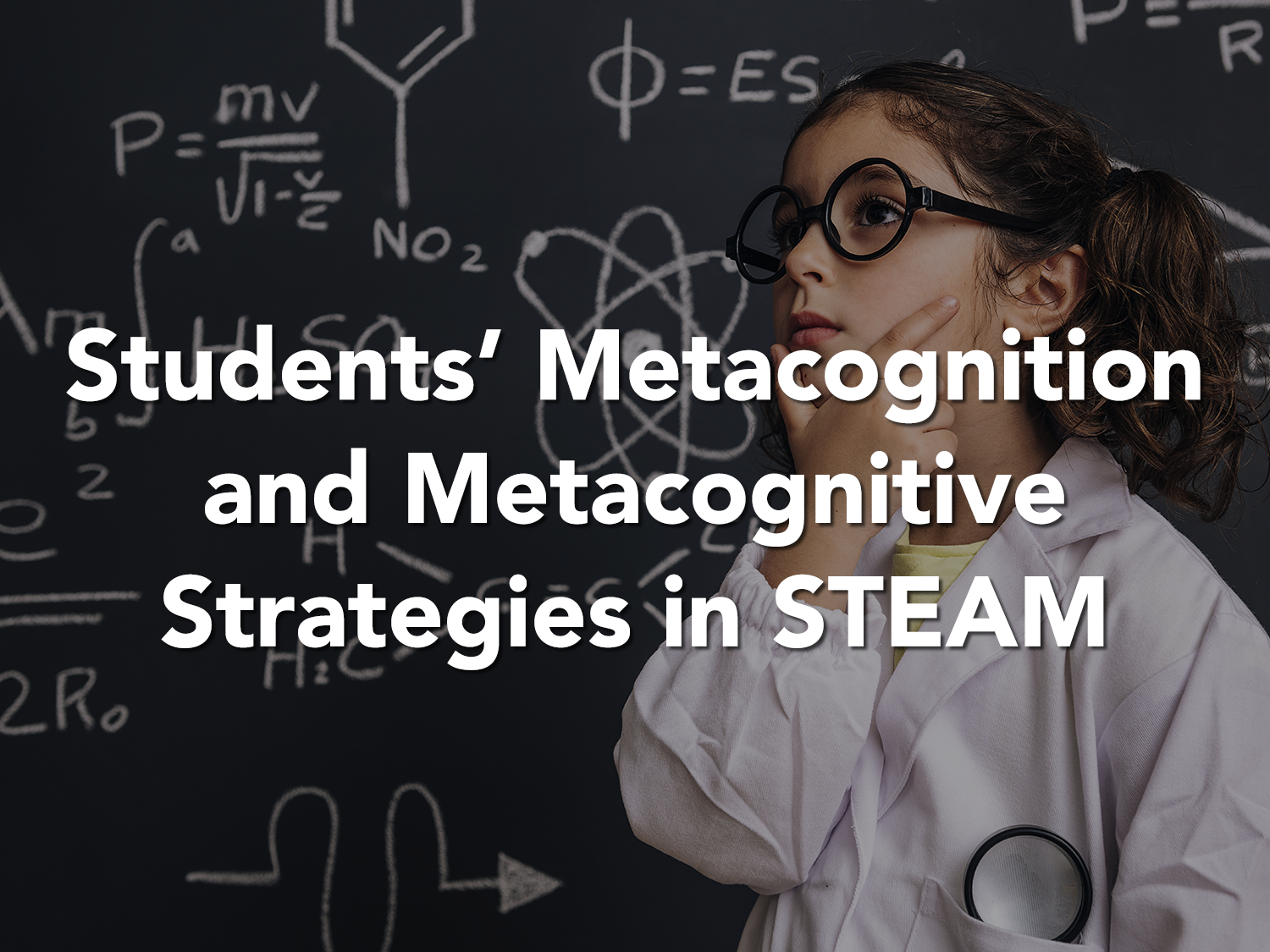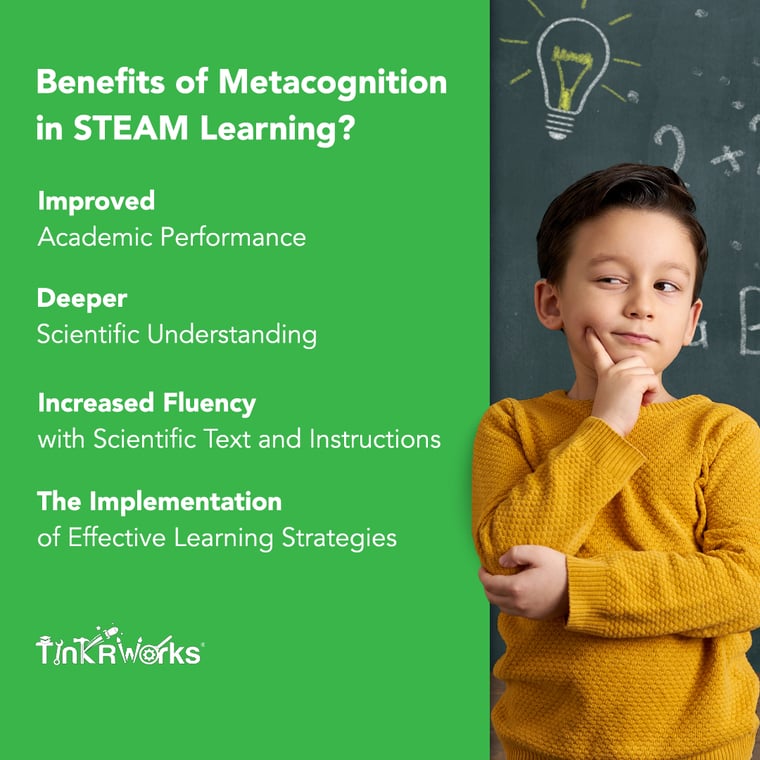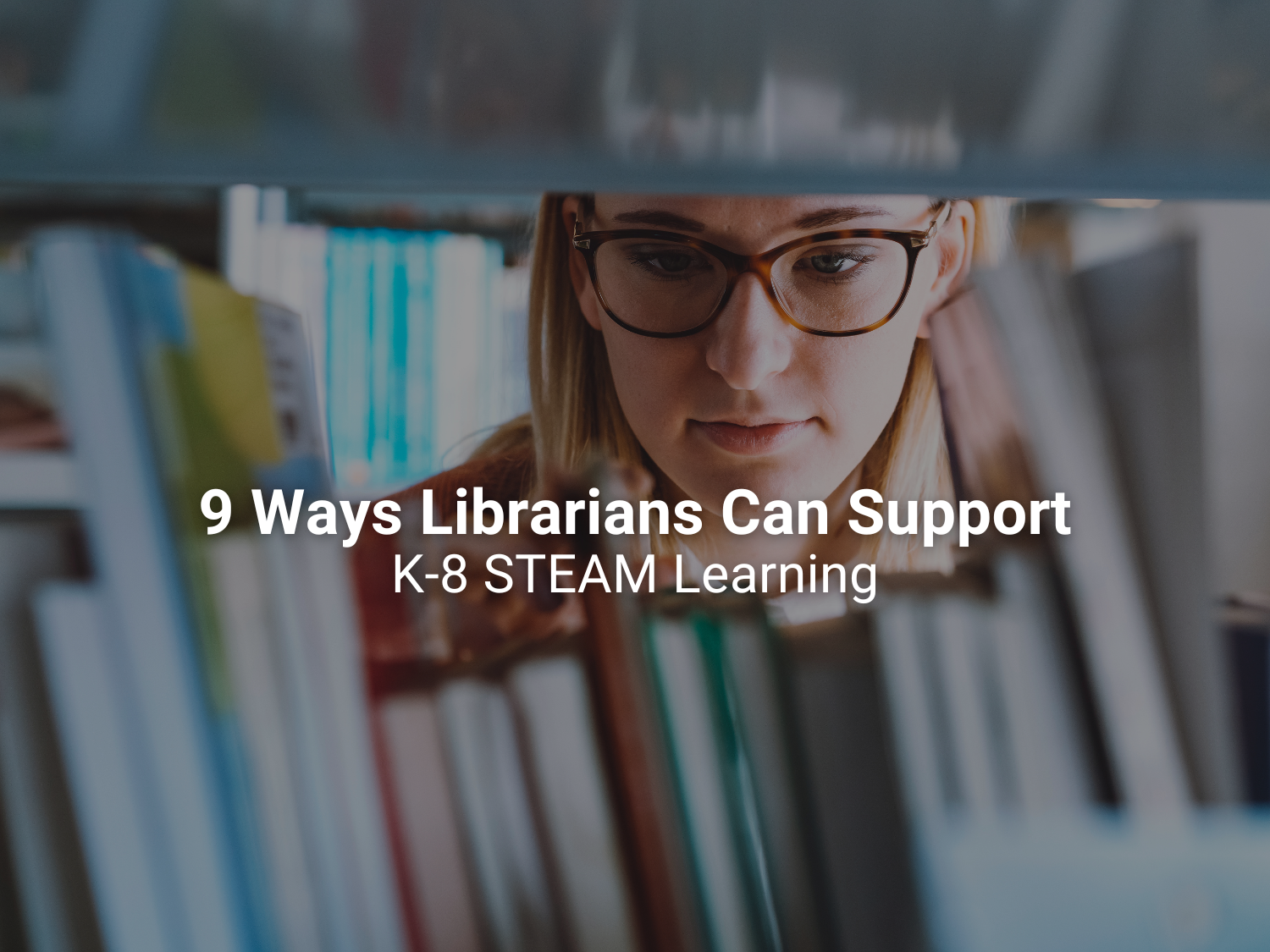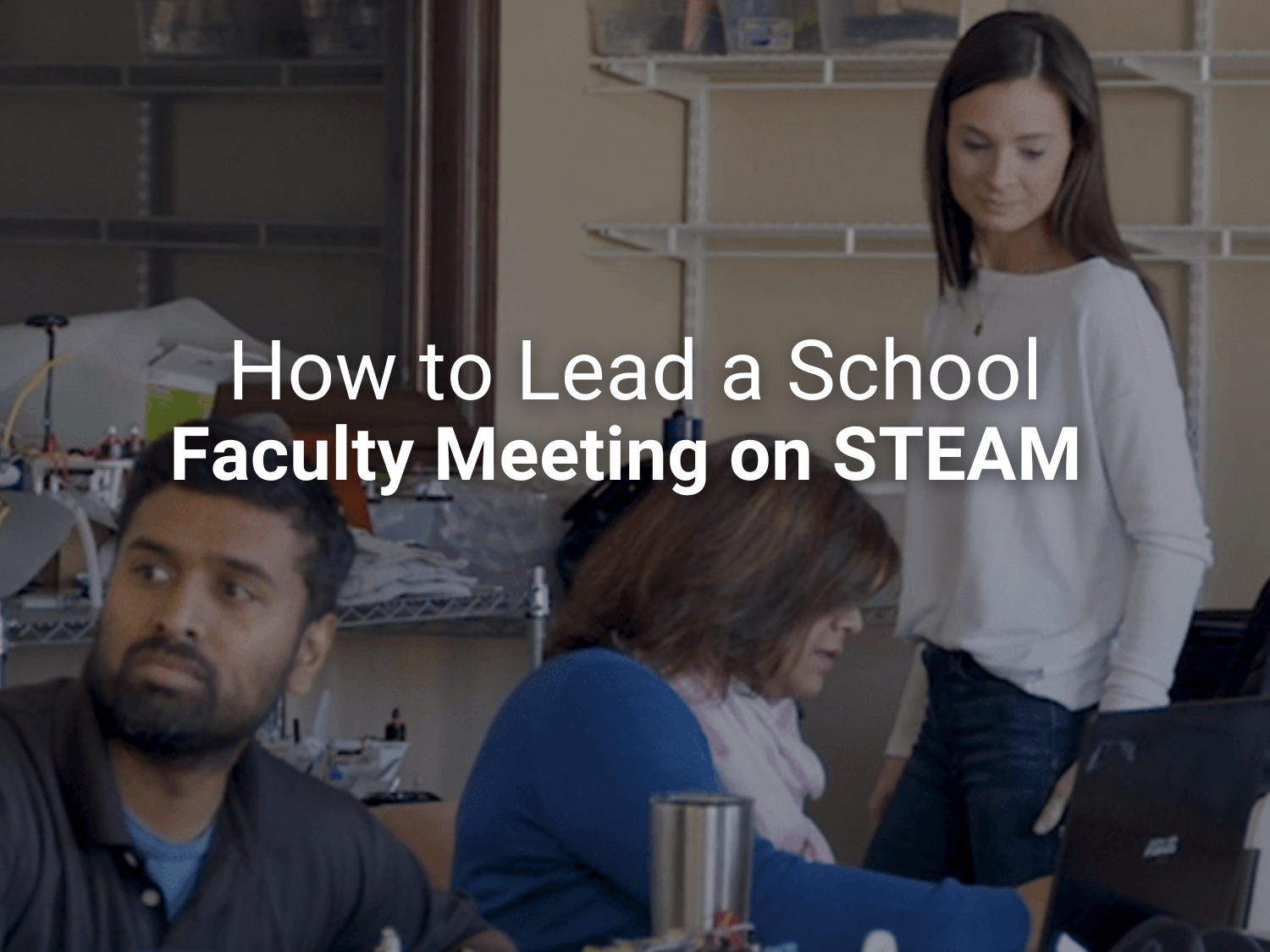Students’ Metacognition and Metacognitive Strategies in STEAM

An effective STEAM classroom and the implementation of Project-based Learning depends, among other things, on cognitive and metacognitive skills. Specifically, they are dependent on cognitive and metacognitive abilities for selecting, reading, monitoring, critiquing, and iterating. It is also true that educational researchers argue that metacognition is a central feature in life-long learning in general and the heart of STEAM, and that metacognitive engagement is key for developing deeper conceptual understanding of scientific ideas.
Adaptive and life-long learning are huge components of American classrooms. The ability to regulate and control one’s thinking, or ‘think about thinking’, are an essential part of such learning. They are also the essence of Project-based Learning. As STEM/STEAM educators, we can help students develop and expand metacognitive skills so students will not just succeed in science class, but as citizens and life-long learners. In this article, we will explore the role of metacognition skills in education and why it's an important component of the STEAM classroom.
What is Metacognition in Education?
If by cognition we mean the variety of learning skills students apply to complete a task, then metacognition can be defined as awareness of, and reflection upon, one’s own cognitive process. With more detail, metacognition can be described as:
-
-
Knowledge about people’s cognition.
-
Knowledge about cognitive tasks.
-
Knowledge about strategies applied to the solution of different tasks.
-
Skills for monitoring one’s cognitive activities.
-
In other words, metacognition refers to the awareness of cognitive processes and the self-regulation and management of those processes in relation to the learning task, including conscious selection of strategies and matching the suitable strategy to task demands. Sound familiar? That is what happens in a project-based rich classroom!
Another way to look at metacognition is to think of two broad classes of metacognition:
-
-
Knowledge about cognition, which includes declarative (‘about’) knowledge, procedural (‘how to’) knowledge, and conditional (‘why’ and ‘when’) knowledge.
-
Regulation of cognition, which includes planning, evaluating, and monitoring
-

Why is Metacognition Beneficial in STEAM Learning?
Every teacher knows that students’ perception of their performance influences their ability to monitor the learning process. Thus, when there is no time limitation, a high perception of performance reflects positively on the actual performance. True enough, researchers have found that when students’ metacognition skills improve, it is possible to also improve their learning outcomes!
This is important because metacognition appears to enhance students’ ability for contextual use of STEAM-related conceptions, improve reading comprehension, and promote the exchange of ideas in the classroom. When it comes to STEM Project-based Learning, students who use metacognition are more likely to:
-
-
Develop conceptual understanding.
-
Go through a process of knowledge construction and meaningful understanding.
-
Follow text and instructions better.
-
Be more motivated to complete assignments.
-
Have more accurate views of the STEAM content.
-
When STEAM teachers expose students to metacognitive tools and strategies involving question posing skills, students can pose more complex questions, indicating that they are developing a sophisticated understanding of concepts and processes. In the STEAM classroom, awareness of the learning process and a stronger ability to monitor, regulate and control the learning contributes to meaningful understanding of key concepts and relevant vocabulary.
Assessing Metacognition in the Classroom
Since it is an internal process rather than an overt behavior, metacognition is inherently difficult to measure, and students themselves are often unaware of their own metacognitive process. For educators, this has led to difficulties with identifying and assessing metacognition skills and their related processes. However, if one considers metacognition to be an understanding of knowledge, then one can detect it in the learner in an indirect manner, either through effective use of this understanding, as witnessed by the learner’s behavior, or by asking the learner to provide an overt description of it.
To make assessment more effective, educators should:
-
-
Employ multiple methods of assessment and collect data from the same subjects by different means.
-
Carry out assessment of the same learner across different times.
-
Carry out assessment concurrently with the task rather than retroactively or prospectively, as it may be more effective.
-
Carry out assessment using real-life problems, questions, and statements rather than abstract or textbook problems.
-
Ensure self-reports or portfolios sought from students regarding their learning processes should relate specifically to their STEAM learning.
-
With respect to assessment of metacognition in younger children, there are three ways for carrying this out:
-
-
Ask children directly about their metacognition.
-
Have children think aloud while performing a task.
-
Ask children to teach a peer or younger child a good solution to a problem.
-
In Conclusion
Metacognition is deeply correlated with the widely known benefits of best practices in a STEM/STEAM classroom. The benefits of metacognition: (a) improved academic performance, (b) deeper scientific understanding, (c) increased fluency with scientific text and instructions, and (d) the implementation of effective learning strategies. It is also known that while metacognition can contribute to different aspects of STEAM learning, assessing it can be a challenge. But it can be done!
-1.png?width=350&height=89&name=TinkRworks%20Logo_Learners%20to%20Innovators%20V2%20(1)-1.png)


